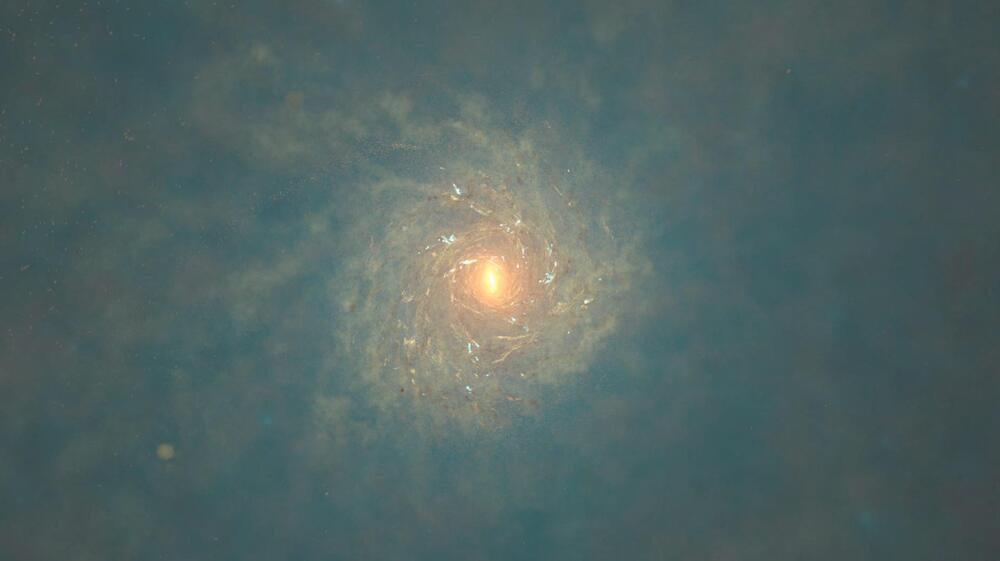China is the first country to operate a space station on its own. The country just launched the final module of its Tiangong orbital station.


Start learning today with Brilliant! https://brilliant.org/upandatom.
Watch Part 2 over on Isaac Arthur’s channel.
https://www.youtube.com/channel/UCZFipeZtQM5CKUjx6grh54g.
If you’d like to know more about Boltzmann Brains, here are some informative papers:
https://arxiv.org/abs/hep-th/0208013
https://arxiv.org/abs/0704.2630
https://arxiv.org/abs/hep-th/0611271
https://arxiv.org/abs/hep-th/0611043
https://arxiv.org/abs/1708.00449
https://arxiv.org/abs/1702.
Hi! I’m Jade. Subscribe to Up and Atom for physics, math and computer science videos!
*SUBSCRIBE TO UP AND ATOM* https://www.youtube.com/c/upandatom.

The U.S. Space Force has a mini-fleet of two robotic X-37B space planes, which have been flying secret missions since 2010.
The most recent mission, called OTV-6, launched in May 2020 and is ongoing. As that name suggests, it’s the sixth flight for the robotic X-37B, which is also known as the Orbital Test Vehicle (OTV). The other five OTV missions launched in April 2010, March 2011, December 2012, May 2015 and September 2017.
We’ve assembled 10 surprising facts about the military space plane for you. Just click the arrows to launch to the next page and enjoy.
US military’s X-37B space plane lands, ending record-breaking mystery mission.
https://www.space.com/space-force-x-37b-space-plane-otv-6-mission-ends
Learn all about the U.S. Space Force’s robotic X-37B space plane, which has flown six mystery missions to date.


The hundreds of gold-rich stars discovered in our Milky Way galaxy may have come from smaller galaxies that merged 10 billion years ago, according to new simulations by a supercomputer.
Using the ATERUI II supercomputer in the Center for Computational Astrophysics at the National Astronomical Observatory of Japan, scientists at Tohoku University and the University of Notre Dame developed new simulations of galaxy formation with the highest resolution yet.
The paper was published this week in the Monthly Notices of the Royal Astronomical Society.

The idea that planets only develop when a star reaches its maximum size has been challenged by the observation that stars and planets “grow up” together.
Some of the oldest stars in the universe, the building blocks for planets like Jupiter and Saturn start to form when a young star is growing, suggests a new study published on Nov. 14 in the journal Nature Astronomy.
The recent findings indicate that stars and planets ‘grow up’ together, challenging a leading belief that planets only form once a star has reached its final size.

The employees past and present are calling it a Twitter “takeover.”
Elon Musk, in a move to wrap himself up in a blanket of his own financing, has bought ad space on Twitter. SpaceX bought the ads for Starlink, and they will play on top of the Twitter platform’s feed for one day in Spain and Australia.
In a tweet in reply to another Twitter account Musk said of the deal, “SpaceX Starlink bought a tiny — not large — ad package to test effectiveness of Twitter advertising in Australia & Spain. Did same for FB/Insta/Google,”
Getty Images.
The reporting is from sources at CNBC.

Scientists have discovered the brightest energy burst ever detected in space — and Astronomy Twitter is abuzz over the electrifying finding.
As Vice reports, this uber-bright gamma ray burst (GRB), which are huge bursts of energy that occur during major galactic events such as star deaths, was detected by both NASA’s Fermi Gamma-ray Space Telescope and the Neil Gehrels Swift Observatory at England’s University of Leicester.
“Brightest GRB ever just dropped,” University of Alabama astrophysicist Marcos Santander tweeted.
Get a Wonderful Person Tee: https://teespring.com/stores/whatdamath.
More cool designs are on Amazon: https://amzn.to/3wDGy2i.
Alternatively, PayPal donations can be sent here: http://paypal.me/whatdamath.
Hello and welcome! My name is Anton and in this video, we will talk about a discovery of a huge galactic structure behind the Milky Way in the hidden Zone of Avoidance.
Links:
https://arxiv.org/pdf/2210.16332.pdf.
https://en.wikipedia.org/wiki/Zone_of_Avoidance.
Great attractor mystery: https://youtu.be/xAS-IoKLddU
Great debate: https://youtu.be/kcKOV7IwlNc.
#zoneofavoidance #milkyway #mystery.
Support this channel on Patreon to help me make this a full time job:
https://www.patreon.com/whatdamath.
Bitcoin/Ethereum to spare? Donate them here to help this channel grow!
bc1qnkl3nk0zt7w0xzrgur9pnkcduj7a3xxllcn7d4
or ETH: 0x60f088B10b03115405d313f964BeA93eF0Bd3DbF
Space Engine is available for free here: http://spaceengine.org.
Enjoy and please subscribe.
Twitter: https://twitter.com/WhatDaMath.
